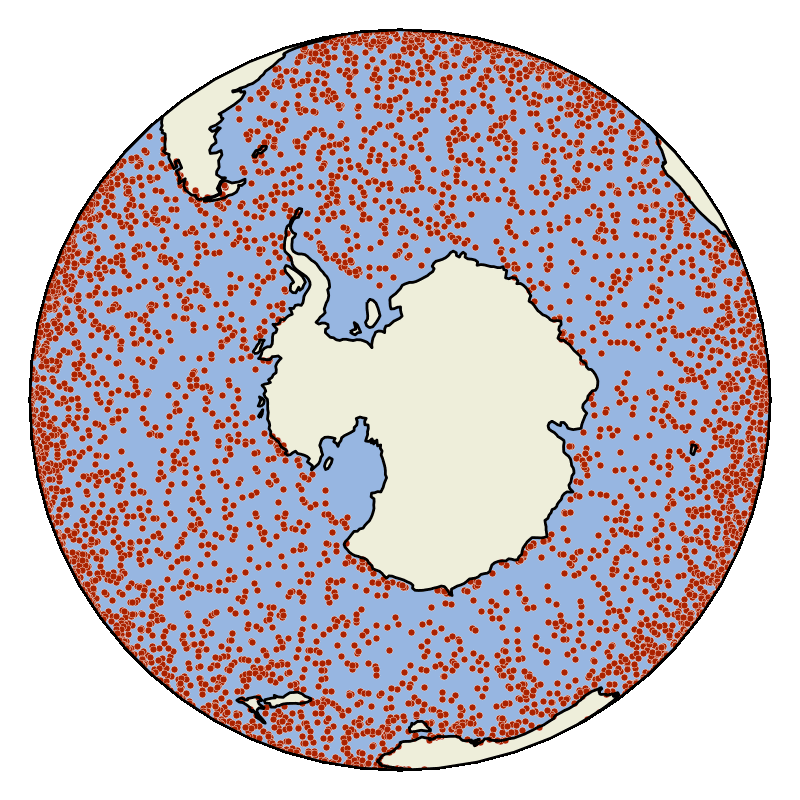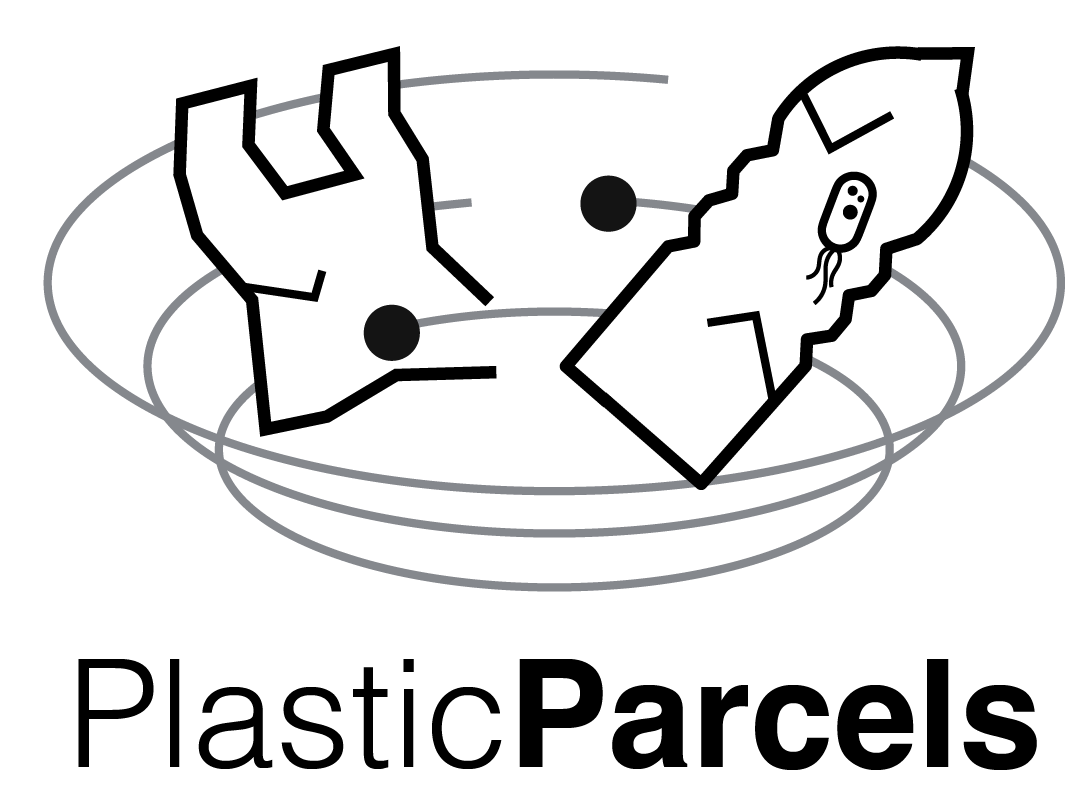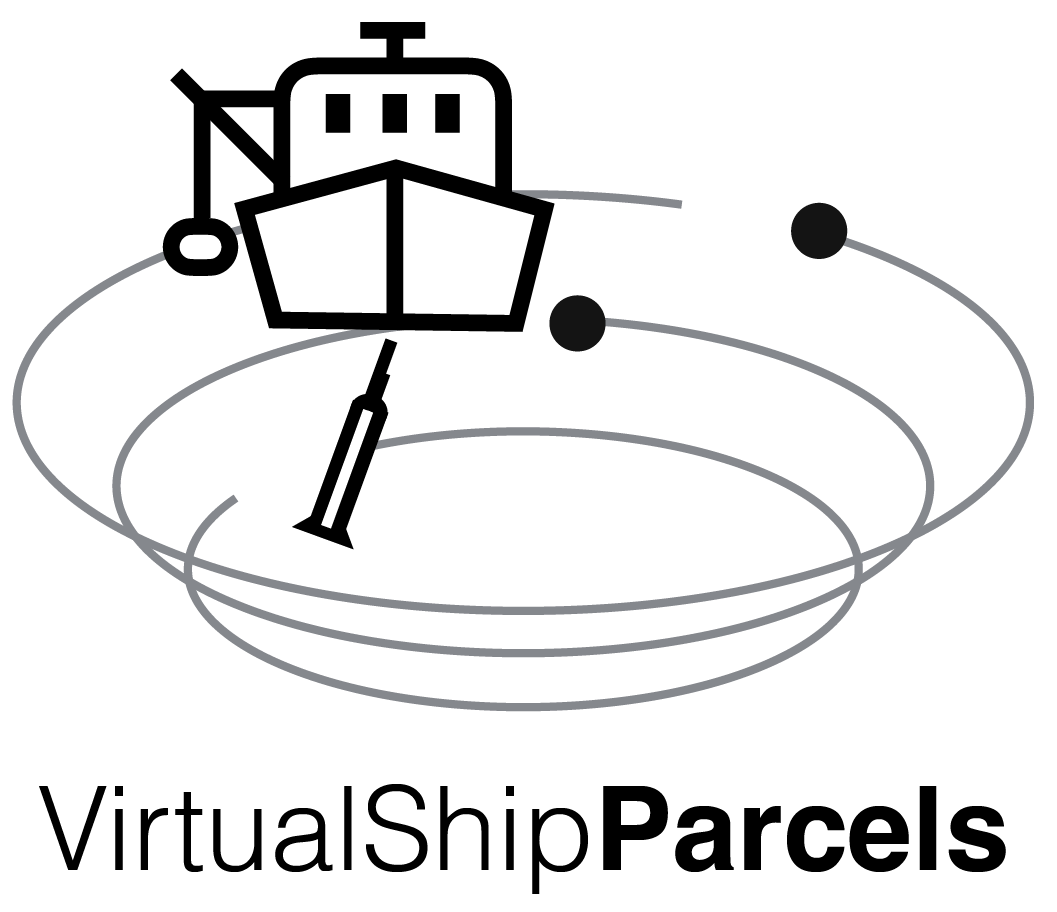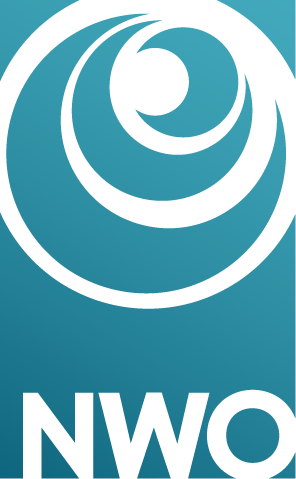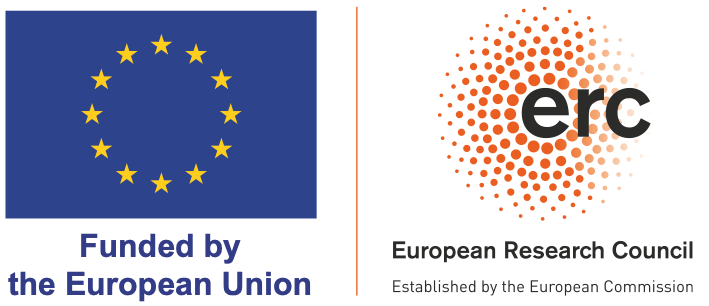Parcels
A highly customisable Lagrangian simulation framework
Parcels provides a set of Python classes and methods to create customisable particle tracking simulations using gridded output from (ocean) circulation models.
Key Features & Capabilities
Parcels can be used to track passive and active particulates such as water, plankton, plastic, icebergs, and fish using data from flow datasets.
Use data from any (curvilinear) grid
Parcels works on model outputs including NEMO, POP, MITgcm, and more.
Combine data on different grids
Create a single Parcels FieldSet from multiple different model outputs.
Define and execute custom kernels
Encode custom particle operations such as swimming or sinking.
Advect particles in 2D and 3D
Use built-in kernels for Runge-Kutta4 and Runge-Kutta45 schemes.
Diffuse particles in 2D
Use built-in kernels for the Milstein and Euler-Maruyama schemes.
Start and stop particles during execution
For example, to simulate oil spills or fish spawning.
Simulate particle-particle interactions
For example, to simulate aggregation or mortality.
Output particle data in zarr format
For highly efficient output of particle data.
Projects
This section lists some of the standalone packages and projects developed with Parcels.
